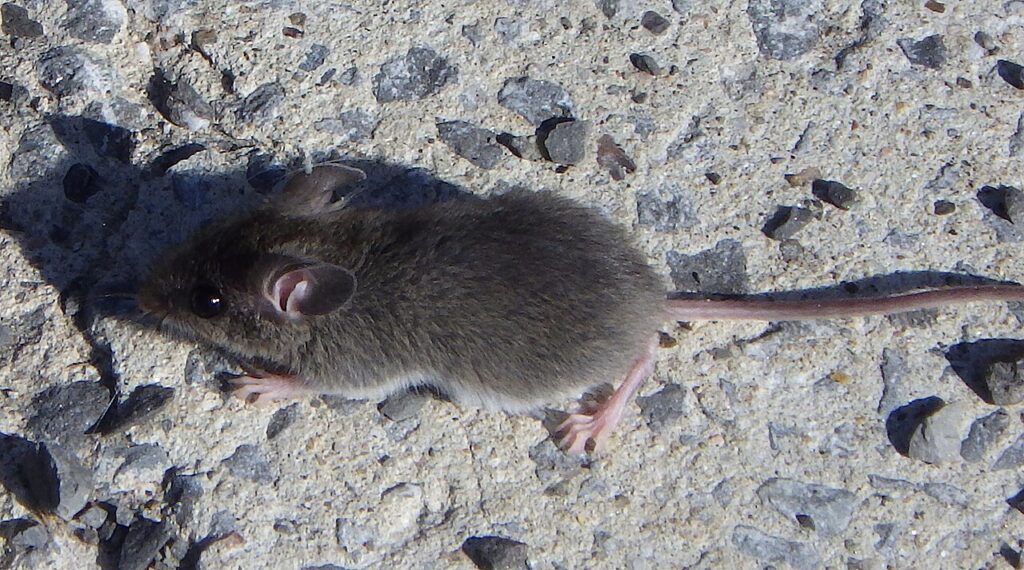Appearance

The House Mouse, scientifically known as Mus musculus, is commonly recognized as the typical mouse found in many households. This small rodent typically measures between 6 to 7.5 inches in length, including its tail, which is usually equal to or slightly longer than the combined length of its head and body. The House Mouse is characterized by its yellowish-brown and black fur on the back, complemented by an ash-gray belly. Its large, bare ears and slender body give it a distinctive appearance.
Life Cycle
House mice are prolific breeders. Females can reproduce as early as six weeks old, with a gestation period of about 17 days. They typically have litters averaging five to six young, but under ideal conditions, a single female can produce up to 100 offspring in a year. Their rapid reproduction and aging make them valuable subjects in genetic studies.
Senses
House Mice rely on their well-developed senses to navigate their environment:
- Sight: Mice detect motion swiftly and have good depth perception but relatively poor detail vision.
- Smell: Their sense of smell is highly developed, allowing them to locate food and potential mates.
- Hearing: Mice have acute hearing abilities, helping them detect sounds from various sources.
- Touch: Sensitive whiskers (vibrissae) help them explore their surroundings and maintain balance.
House Mouse Behavior Patterns
Feeding and Water Habits
House Mice are opportunistic feeders. They typically consume about 1/8 to 1/4 ounce of dry food daily and can survive on food with sufficient moisture.
Nesting
Mice prefer to build nests in secure locations with easy access to food sources. They are primarily nocturnal, although they may venture out during the day if necessary.
Home Range
House Mice usually maintain a home range of about 20 feet from their nests, depending on the availability of food and shelter.
Signs of a House Mouse Infestation
Recognizing the signs of a House Mouse infestation can help in prompt control measures:
- Droppings: Small, rod-shaped droppings are a common sign and indicate the level of infestation.
- Tracks: Mice leave distinctive tracks that resemble handprints.
- Gnawing: Fresh gnaw marks on wood or other materials signify mice attempting to access food or nesting areas.
- Burrows: Mice often create burrows along walls, in dirt floors, and under vegetation.
How to Control House Mice
Effective mouse control requires a multi-faceted approach:
- Trapping: Glue board traps and multiple catch traps are effective for mice. Place traps along walls, with the trigger side facing the wall, spaced 6-10 feet apart.
- Sanitation: Maintain cleanliness in your home by removing food sources and clutter that can serve as nesting sites.
- Exclusion: Seal all small openings and maintain a perimeter free of overgrown foliage to prevent mice from entering your property.
- Monitoring: Regularly check bait stations and traps, relocating them if they remain undisturbed after three weeks.
Additional House Mouse Control Information
- Mice can enter through openings as small as 1/4 inch.
- Dead mice can attract other pests, so regularly check traps to prevent unpleasant odors.
- Anticoagulant rodenticides can disrupt the rodent’s clotting ability, while zinc phosphate acts as an acute poison.
By understanding the House Mouse’s behavior and implementing effective control measures, you can protect your home from these common pests. For comprehensive pest management solutions, contact Traffic Pest Solutions to safeguard your property from rodent infestations.
